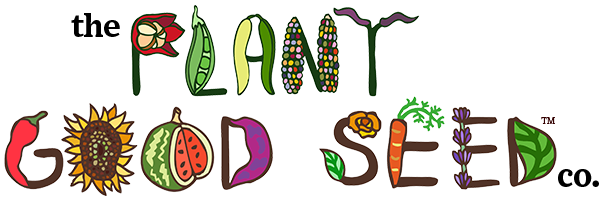
Buena Mulata is an heirloom spicy pepper (Capsicum annuum) that originates from folk artist Horace Pippin; he describes "chameleon-like color changes" during fruit ripening: “violet to pinkish-flesh color, then orange changing to brown, and eventually to deep red.”
Buena Mulata is an heirloom spicy pepper (Capsicum annuum) that originates from folk artist Horace Pippin; he describes "chameleon-like color changes" during fruit ripening: “violet to pinkish-flesh color, then orange changing to brown, and eventually to deep red.”
I first became aware of this variety when Quin sent me some seeds he had saved from a single plant he acquired at the 2018 Heirloom Seed Expo. Both of us were drawn by the unusual coloration of the fruit - they start out dark purple, and as they mature cycle through gorgeous tones of lavender, salmon, orange, and maroon before finally reaching the classic cayenne bright red. Soon I learned more from my friends at Truelove Seeds, who had acquired the variety and the attached stories from William Woys Weaver. Apparently the Buena Mulata was one of a batch of pepper varieties stewarded in the first half of the 20th century by the Greater Philadelphia area painter and gardener Horace Pippin.
I had first encountered Pippin’s work at the Barnes Foundation in Philadelphia, where it boldly stood out among its mostly European Impressionist neighbors. His work is gorgeous and strikingly real, and to me appears “ahead of its time” both aesthetically and conceptually - it portrays his experience fighting in WWI, tight scenes of domestic life back home, almost fairytale-like Biblical visions, and symbolic depictions of contemporary realities. From this article in the Reading Eagle I learned that he started painting after returning from the war, partly as a way to process the multivalent horrors he experienced there, and partly as physical therapy for an arm injury he had sustained in combat.
Pippin had friends in the Black catering community of Philadelphia, and it seems like this was the source of his pepper collection. Many of the peppers he stewarded stand out for their showy and unusual coloration, and everytime I visit the Buena Mulata plants in my garden I think of him and easily see why they would have appealed to the artist. At the same instance in time, each plant bears purple, pink, orange and reddening fruit - all in a display that reminds me that whilst for humans art can be a valuable redemptive and therapeutic process, the earth is the greatest painter.
While much can be said about the appearance of these peppers, their flavor is also standout. They have a somewhat smoky undertone to their spice, especially if harvested while still not quite fully ripe. Throughout the summer I add them to salsas and use them in stir fries. Near the end of the season I harvest and dry a big batch. To do this I cut them open and lay them out to dry on a screen in the sun for a couple days. In my humid climate I need to finish off the drying process in the dehydrator before storing the peppers away. The dried peppers can be used in all sorts of ways - as part of bean broths, in soups, ground up and sprinkled… I like to use them alongside fennel seeds to make a chili oil, which I eat through the winter as a reminder of the heat and the colors that will inevitably return to the landscape after a few dark months.
For those curious to learn more about Pippin’s peppers, I recommend this Seeds and Their People interview with William Woys Weaver, whose grandpa traded Pippin pepper seeds for bee stings.
Collections: All Products New and Returning Varieties Peppers, Spicy
We use cookies on our website to give you the very best shopping experience we can. By using this site, you agree to its use of cookies.
Emails every 4-6 weeks featuring compelling original gardening content, new variety announcements, sales, and event appearances.
